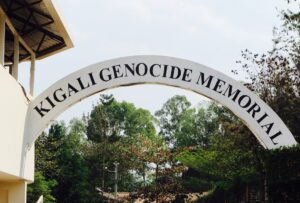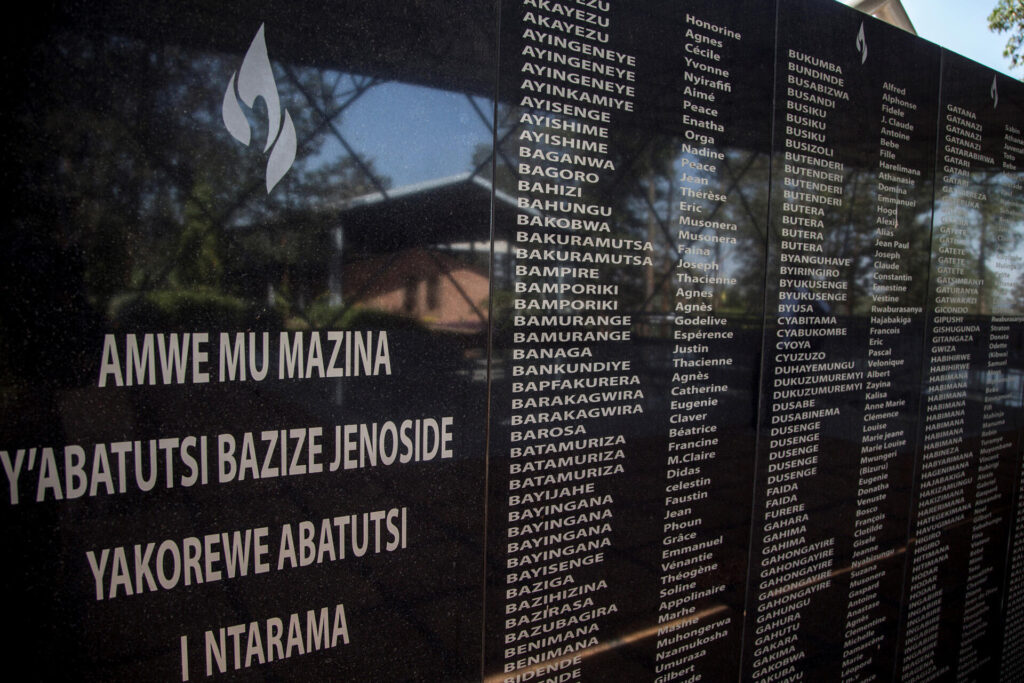The Rwanda Genocide 1994: 100 days of Ruthless slaughter
Rwanda Genocide: When the name of the country Rwanda is mentioned, what comes in the minds of some people is the “1994 Rwanda Genocide” and up to date when the genocide is mentioned some Rwandese develop goose bumps or the word sends shivers down their spine. This is a year that Rwanda and the entire world wishes to forget and delete from the history of their lives, it is one of the heaviest and saddest moments in Human history known as the rapidest and most intensive murdering spree the world has ever witnessed.
Genocide is a deliberate and massive murder or violence against members/group of people of a particular national, racial, religious or ethnical group with the aim of destroying the entire group.
The Rwanda Genocide refers to the massive massacre of people of Rwanda that are members of the two ethnic groups of the Hutu and Tutsi. The Rwanda Genocide is painfully known as “100 days of slaughter” because it lasted 100 days.
This cruel massacre began on the 6th April 1994 leading to the slaughter of as many as 800,000 people with majority from the Tutsi. minority as well as over 2 million refugees crowded in disease causing camps in Burundi, Tanzania, Uganda and DRC (former Zaire).
It ended by Early July after the Rwandan Patriotic Front (RPF) under Paul Kagame, known to be a Tutsi rebel group) backed by the UPDF seized more territories and took over Kigali City.

What You need to know about the Hutus and Tutsi
The Hutus and the Tutsi are two of the considerable ethnic groups in Rwanda and are believed to share the same origin. The two tribes were the first occupants of Rwanda.
Their origin and existence is justified by a myth (legend) and according to it, a god named “Kigwa” who descended from heaven had three sons; Gahutu, Gatutsi and Gatwa. In order to select a successor among them he gave everyone of them a pot of milk to watch over during the night.
By morning, Gatwa had drunk the milk, Gahutu carelessly fell asleep and the pot broke hence spilling the milk and only Gatutsi kept the milk safely until morning.
Kigwa then named Gatutsi as his heir, Gahutu was meant to be a servant to his brother and only acquire cattle through rendering services to Gatutsi and Gatwa was resigned to be an outsider and condemned to the edge of society.
The Batwa are the descendants of Gatwa, the Hutu are the descendants of Gahutu and the Tutsi are the descendants of Gatutsi.
This legend became the foundation of the hierarchical relation with the Tutsi placed at the Apex of the status pyramid higher than the Hutu who in turn were above the trivialized Batwa.
The Tutsi are the elite minority who form about 14% of Rwanda’s population. Were originally cattle keepers (pastoralists) and are distinguished from others by their tall and slim appearance.
The Hutu who form the majority of the population (85%) did not own or rear cattle, are sturdy, shorter and strong farmers. However this has gradually changed the categories because now any of the tribes own cattle or intermarriage between them.
With colonization of Rwanda by Europeans, subsequently the Hutu and Tutsi had an Ethnic role. After the former colony of Rwanda (Germany) losing control over Rwanda during the First World War, Rwanda’s territory was placed under Belgian control.
During the late 1950’s another wave of conflicts resulting from Decolonization increased in Rwanda. Rwandese started fighting for their Independence from Belgium who later relinquished power and granted them their Independence on 1st July 1962.
The fight of Independence was initiated by the Hutu who formed the majority of the population and they gained momentum and took their “rightful” place. Whilst the Tutsi were disappointed and they resisted democratization and the loss of their privileges. This caused more conflicts among these two major tribes.
The origin of the Rwanda genocide
Ever since 5th July 1973 when Juvenal Habyarimana (a Hutu) took overpower by a bloodless coup d’état, Rwanda was subjected to a dictatorial regime whereby the Tutsi were never allowed to get involved.
However, the Arusha Peace Agreements signed on 3rd August 1993) by Habyarimana enfeebled the Hutu powers on Rwanda, permitting the Tutsi to also get involved in running the country’s affairs and a way of harmonizing the Tutsi and Hutu.
However, this was a big disparage to the Hutus and the two tribes continued being at loggerheads with each other.
On the evening of 6th April 1994 at 8:25pm, a plane (Falcon 50 presidential jet) carrying President Juvenal Habyarimana and Cyprien Ntaryamira then Burundian President was shot above Kigali Airport (as it was planning to land), making it to crush into the garden of the Presidential Palace hence killing everyone onboard.
On the fateful day, these two presidents were returning from a Peace summit of African leaders in Dar Es Salaam, Tanzania. This plane crush was a catalyst that triggered this genocide.
Though the death of the president is not the real cause of the genocide, the conflict was just a time bomb waiting to explode. There was no clue or story on who was responsible for the plane crush although the Hutu extremists blamed it on the Rwandan Patriotic Front (RPF).
The next day 7th April 1994, the Hutu Militia, military officials, politicians and businesspeople organized for this haunting murder. Within just few hours, recruits including young boys were posted all over the country to execute this wave of slaughter. It targeted the Tutsi and moderate Hutu.
Organized of soldiers, police and militia mercilessly hacked their way into the Tutsi community killing any they came across whether young or old.
The Hutu leader saw Habyarimana’s death as a golden chance for him to take overpower hence sparking the conflicts because he believed that the only way to stay in power is when the Tutsi are completely wiped.
The 100 days of ruthless slaughter
The murdering commenced from Kigali when the Anti-Tutsi youth Organization (Interahamwe militia) formed by a radical/extremist Hutu Col Theoneste Bagosora began placing barricades where they world check Identity Cards (because IDs at that time had the person’s ethnic group) and mercilessly slaughtered individuals who belonged to the Tutsi tribes using Machetes and knives
The massacre spread within several weeks targeting members of the Tutsi tribe, a record of Government adversaries were handed to militias who would go and attack them.
Participants in the murder were offered incentives inform of food or money to encourage them. Mass media especially radios played also a great role in spreading the hate propaganda like “wipe those cockroaches”.
The radios would identify the names, locations and even the license plates of the individuals to be killed. This killing happened door to door, neighbors killing each other, husbands killing their wives or risk being killed for harboring an enemy.
Rape was also used as a war weapon where some Tutsi women were taken as sex slaves (with over 250,000 to 500,000 being raped) hence infecting them with HIV/AIDS, make them go through the emotional torture (die of sadness) but after sexual harassment others would eventually be murdered, young girls were tortured by cutting their breasts. Machetes, Knives and clubs were used as weapons to obliterate the Tutsi because bullets were costly.
The slaughtering continued and extended up to schools, hospitals and churches because most of the Tutsi had sought refuge in these places. These places were turned to places of massive manslaughter in the time of Rwanda Genocide.
There was a massive massacre on the 9th April 1994 where over 100 people were murdered by Interahamwe militia in the Pallottine Missionary Catholic Church at Gikondo, Kigali. This was executed under the supervision of a Hutu Presidential Guard and was one of the first evidences that there was Rwandan Genocide. This was discovered by United Nations Assistance Mission for Rwanda (UNAMIR).
April 15th and 16th of 1994 were one of the worst days of the Genocide because it is estimated that 20,000 people were murdered with grenades, guns, machetes and clubs at Nyarubuye Roman Catholic Church (located in Eastern Rwanda about 97km from Kigali City).
most murders took place in churches, churches are usually perceived as places of worship and refuge but instead turned into places of incredible horror.
It so occurred that the Mayor of the place had advised people of his area to hide in this church claiming that it is a safe place for them to hide but unfortunately he was the same person who betrayed them to the Hutus who killed all of them leaving no life breathing (no civilians, men, women, girls, boys and infants survived).
The two day massacre at this church started on 15th April at around 3pm whereby men armed with crafted weapons, grenades and guns entered the church.
Since the church also had Hutu refugees, one of the killers addressed the crowd using a megaphone and requested Hutus to be separated from the Tutsi and the latter were killed while the former were spared.
They first used guns and when the bullets were used up they changed to machetes, clubs and knives which became so tedious hence they would kill in shifts until all of them were wiped out
Corpses were left to decay on the church floors while others were left outside for predators to feast on. No corpse was allowed to be buried but instead thrown into the rivers as a way of sending them back to their ancestral homes since most of the Hutus believed the Tutsi were originally from Ethiopia.
The end of the Rwandan Genocide
This heartbreaking agony ended in mid July after the Rwandan Patriotic Forces (RPF) took over Rwandan Government. RPF is mostly made up of Tutsi people who were in Exile in the neighboring country of Uganda.

Their gainful entry and control of Kigali City marked the end of the 100 days of slaughter. The Hutu thereby flee to neighboring country of DRC (then Zaire).
The Rwandan Genocide is one of the most painful events in human history that lasted 100 days, these were the worst 100 days of terror whose painful memories will last in people’s hearts for centuries.
Several Genocide sites exist to commemorate and remember the lives of innocent people that were brutally murdered during the Genocide.
